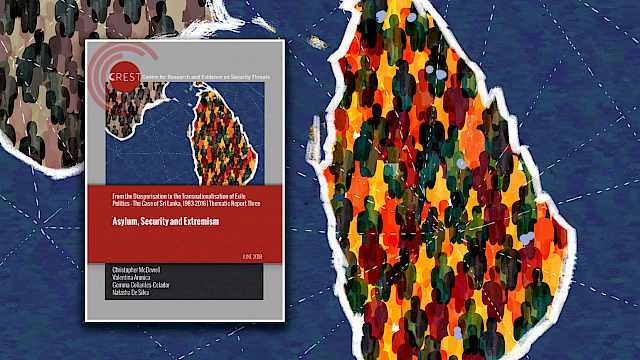The refugee journey from a place of danger to a place of safety involves a series of transitions. At each stage of the displacement cycle individuals become defined by legal-bureaucratic and descriptive labels that may include an ‘internally displaced person (IDP)’, an ‘asylum seeker’, a ‘refugee claimant’, a ‘registered refugee’, a ‘prioritised or deprioritised “resettlement case”’, a ‘rejected asylum seeker’, or a ‘returnee’.
These labels are important because they infer a set of legal rights, a documented point in an official protection process, and an entitlement to humanitarian support. Conversely, labels can also signal the withdrawal of rights, support and protection.
The route from danger to safety is rarely linear, but rather families and groups of friends move frequently between different statuses; and as if playing a game of snakes and ladders they can come close to achieving a high level of entitlement (to be accepted on a resettlement programme, for example) only to be knocked back and obliged to wait for a later opportunity. There is no certainty in the process and the quality of character that refugees most need is patience.
Determining identities
Transitions in status demand also statements of identity. The bureaucratic processes to confer entitlement involve a series of determinations that require registrations, health and other assessments, interviews, case reviews, and the gathering of biometric data including iris scanning.
One’s identity is crucial in this process as individuals are required to constantly restate who they consider themselves to be and why they merit protection. Repeated interviews expose inconsistencies in personal biographies and experiences of conflict.
Repeated data gathering
Accurate information, it is argued, should lead to better humanitarian outcomes as vulnerability can be identified and those most in need accelerated through the referral system.
However, the repeated gathering of data and the need for retelling of stories expose the underpinning concern that humanitarian systems have that, during registration (which occurs once an individual has crossed a border), or in refugee status determination, there is an ever-present possibility of fraud. Concerns about identity theft and substitution, fraudulent family composition, and multiple registrations are transition risks that UN agencies seek to manage.
So too are these transition risks for refugees, for whom the possibility of inconsistency in their statements increases with each retelling, each misspelt name or misremembered date. As individual family members’ records are bundled together in one ‘case’, so the likelihood of factual inconsistencies increases and credibility is once again brought into question.
Security concerns
While the bureaucracy of the humanitarian system creates uncertainty for refugee claimants at each stage of the refugee cycle, wider security concerns add to the precariousness of transitions between the stages of forced migration. The United Nations takes the lead in vetting resettlement applicants, ‘deprioritising’ those who are thought to present a risk by virtue of their previous engagement in conflict or the continued engagement of their family members, or because of past criminal activities or a government security role that may be implicated in potential war crimes.
The ‘refugee condition’, frequently linked to traumatic events, manifests in physiological, psychological, and sociocultural stress compounded by the struggle to secure short-term and longer-term protection for the immediate and extended family. Material hardship, poor living conditions inside and outside of camps, unemployment or exploitative work, children missing out on education, growing indebtedness, and unaddressed health needs shape the precariousness of displacement.
Risk of extremism
Refugee-receiving states in the region of conflict, as well as western governments who play host to asylum populations, are increasingly concerned about the risk of extremist movements seeking to recruit and radicalise amongst displaced peoples.
The stress and insecurity of refugee-seeking are likely to intensify with each transition where opportunities for legal and safe escape routes do not exist. The condition permits opportunities for agents of radicalisation to exploit vulnerabilities. In particular, to target young men who have lost the opportunity of education and a normal growing-up, who have been forced to hustle on the streets and who do not have the means to support their parents and siblings in the way that is expected of them.
Extremist narratives offer ready explanations for conflict, directing grievances at Western states. Refugees can be drawn into extremist networks that offer social support as well as contacts and resources for onward movement.
The United Nations is leading the diplomatic drive for a new Global Compact on managing large-scale refugee movements to include addressing the protection risks identified in this article at those key transition stages in the displacement cycle. Addressing the security dimensions of those risks, in particular, those around recruitment and radicalisation, are likely to be some of the most contentious topics discussed.
In asylum-providing countries, interventions should seek to address the problem of protracted displacement while at the same time providing meaningful education, employment, and other livelihood support to reduce the risk of marginalisation and impoverishment.
Support will be required to prepare refugees for either permanent settlement in their chosen country of asylum or to enable them to return home with the resources to rebuild their lives. Any new global compact to achieve these objectives will have to secure international agreement among states to cooperate in addressing refugee crises. This necessitates a shift in attitude towards forced displacement and migration underpinned by a rethinking of current displacement risk management. Safe and legal routes out of situations of danger would go some way to removing the opportunities that extremist organisations exploit in the patterns of movement recently witnessed in the Middle East and Europe.
Copyright Information
As part of CREST’s commitment to open access research, this text is available under a Creative Commons BY-NC-SA 4.0 licence. Please refer to our Copyright page for full details.
IMAGE CREDITS: Copyright ©2024 R. Stevens / CREST (CC BY-SA 4.0)








